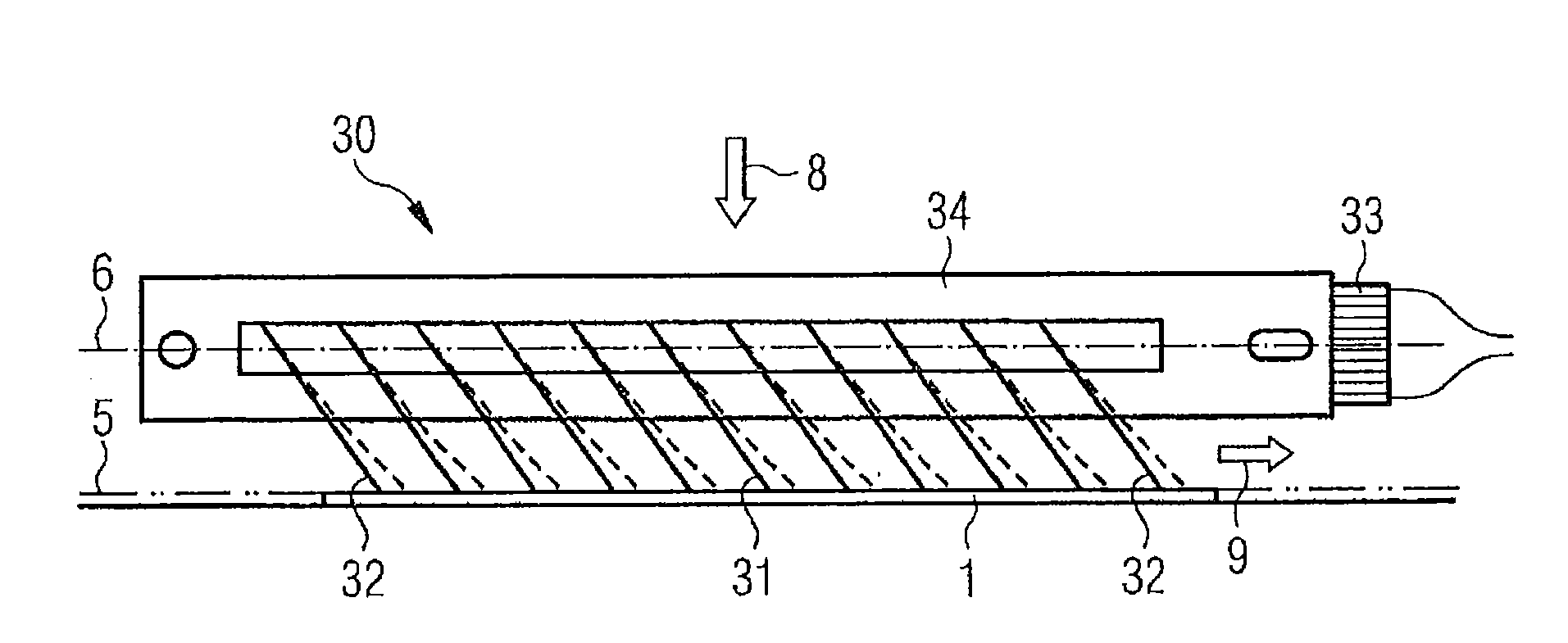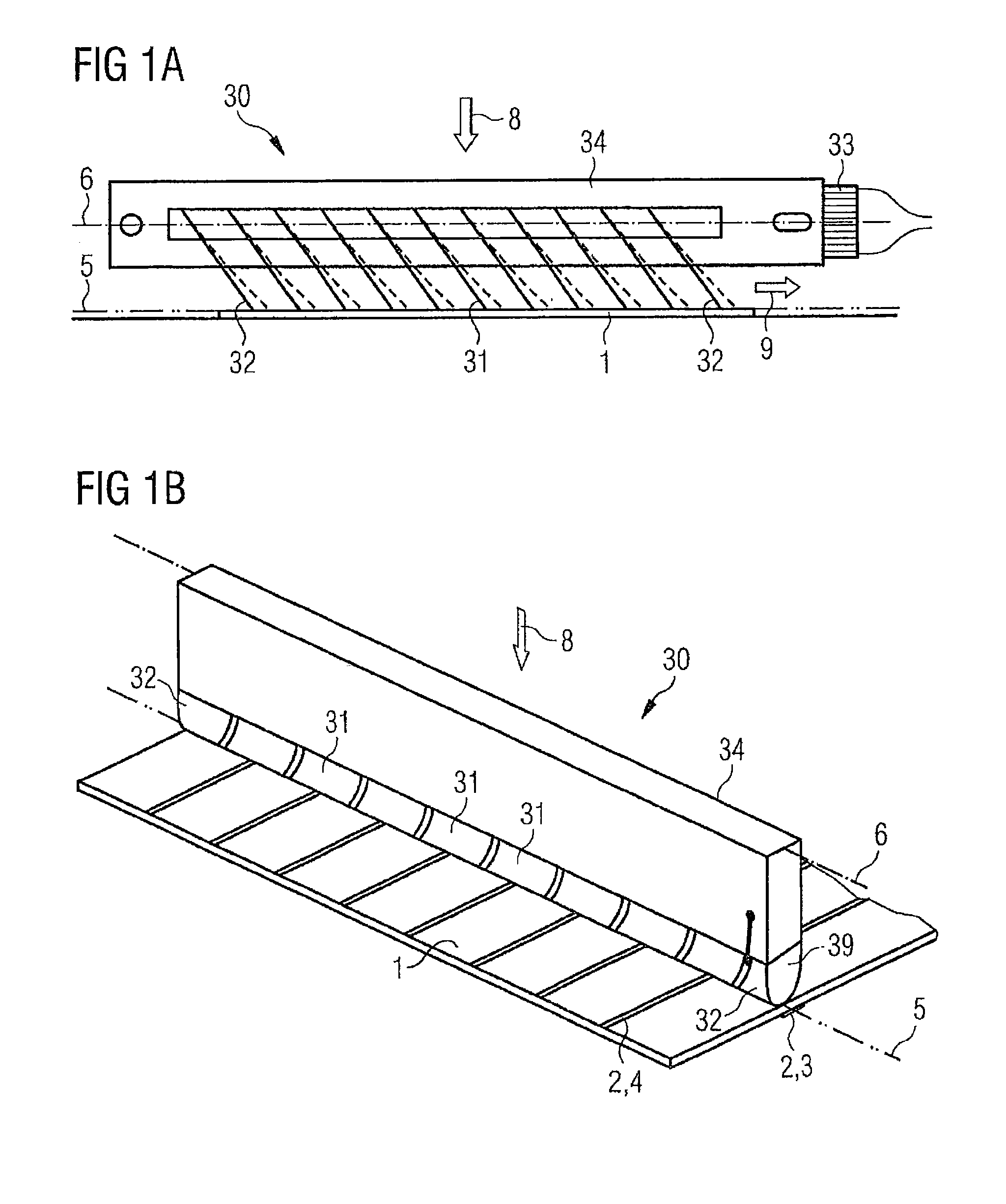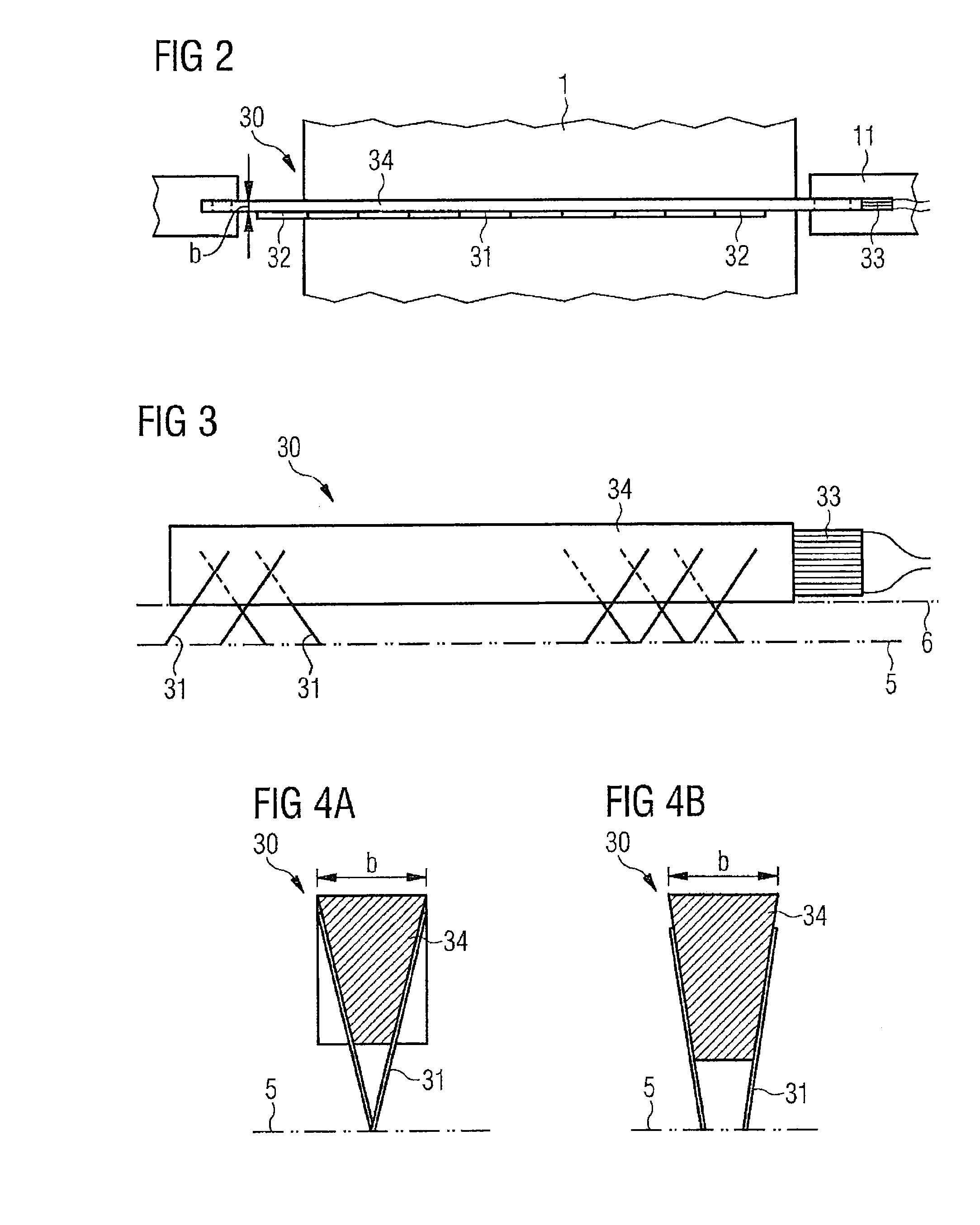Probe for temporarily electrically contacting a solar cell
a solar cell and temporary technology, applied in the direction of measurement leads/probes, photovoltaic monitoring, instruments, etc., can solve the problems that the described problems cannot be remedied using this device, damage to the solar cell, and the inability to temporarily contact the solar cell, so as to prevent tension
- Summary
- Abstract
- Description
- Claims
- Application Information
AI Technical Summary
Benefits of technology
Problems solved by technology
Method used
Image
Examples
Embodiment Construction
[0026]Various designs of solar cells may be electrically contacted for testing purposes in various manufacturing steps using the probes described hereafter, in that the configuration of the contact elements 31 is adaptable to the location and the size of the electrode terminals 2 of the solar cells 1. To test a solar cell 1, it is temporarily, i.e., only over a defined time interval of the testing, and removably contacted by probes and subjected to a light flash directed toward the front side and incident almost entirely thereon. A current generated by the light action and a voltage are tapped as the measuring signal via the probes 30 and supplied to analysis. The contacting is performed only by laying the probes 30 on the electrode terminals 2 of the solar cell 1, and the contact is interrupted by lifting the probes 30. In this way, a series of solar cells 1 can be temporarily contacted, tested, and transported further continuously.
[0027]The probe described hereafter is to be usabl...
PUM
 Login to View More
Login to View More Abstract
Description
Claims
Application Information
 Login to View More
Login to View More - R&D
- Intellectual Property
- Life Sciences
- Materials
- Tech Scout
- Unparalleled Data Quality
- Higher Quality Content
- 60% Fewer Hallucinations
Browse by: Latest US Patents, China's latest patents, Technical Efficacy Thesaurus, Application Domain, Technology Topic, Popular Technical Reports.
© 2025 PatSnap. All rights reserved.Legal|Privacy policy|Modern Slavery Act Transparency Statement|Sitemap|About US| Contact US: help@patsnap.com



